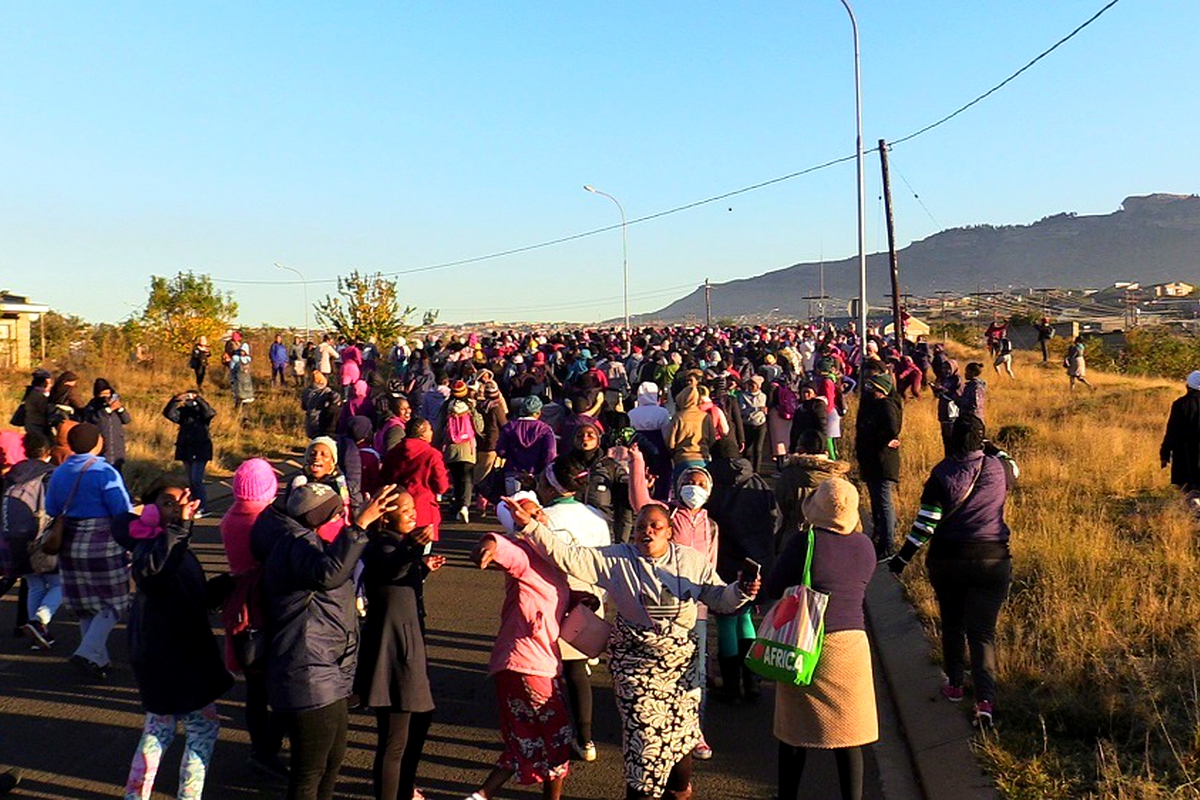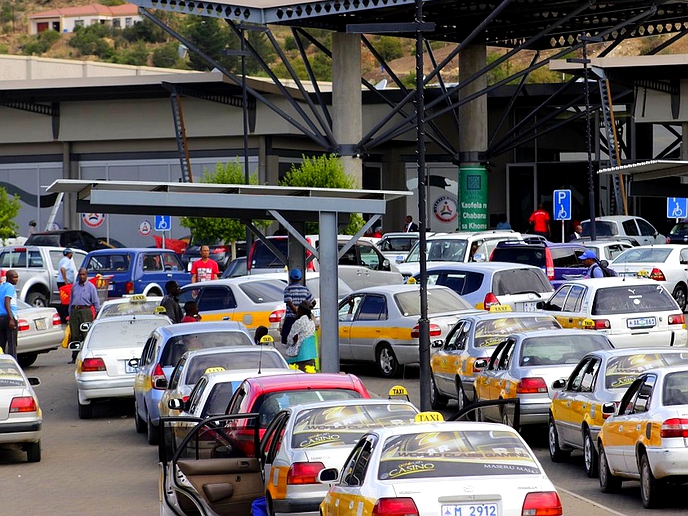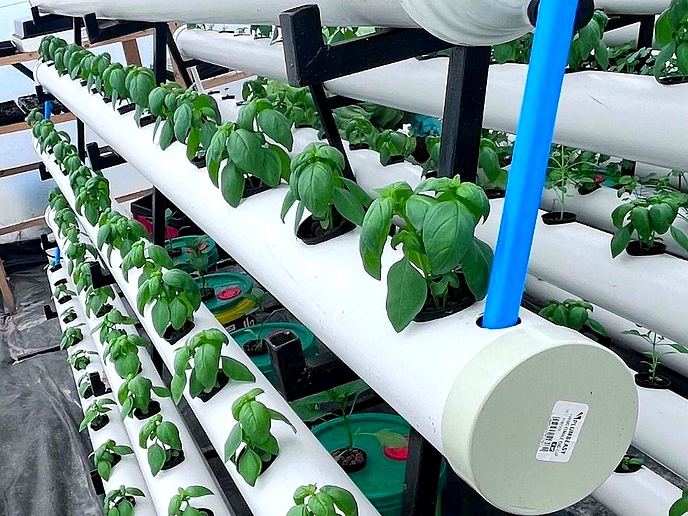GOVERNMENT has finally released a minimum wage gazette that will see factory workers earn improved salaries for the fiscal year 2021/21.
business
June 17, 2021
NEO SENOKO
3 min read
14 % salary hike for factory workers

Striking factory workers blocking the road in Ha Thetsane
This, after two people were killed and several others were injured during demonstrations that rocked Maseru and the industrial town of Maputsoe since May.
The government has announced a 14 percent increase for factory workers and a 9 percent increase for other sectors.
It took weeks of violence and police brutality for the government to reach to this decision.
On Wednesday, the Ministry of Labour said in a statement that factory workers will be smiling all the way to the bank effective from July 1.
“The minimum wage for factory workers has been increased by 14 percent and 9 percent for other sectors. The increase is set at this level because there was no increase in 2020/21 financial year,” the ministry said.
Workers were previously urged to stop protesting and return to work as the gazette would be released on June 16. Since last week Monday, scores of factory workers suspended their strike and went back to work.
While not entirely satisfied with the move, trade unions have applauded government’s decision, saying it is a step in the right direction for the largest employer in the country.
The Secretary General of the Construction, Mining, Quarrying and Allied Workers (CMQ) Robert Mokhahlane said in an interview with Metro that the move is positive although their demands were not entirely met.
“I cannot say we are fully satisfied with the increase because we had requested 20 percent, but on the other hand we are happy because at least the increase is above the current inflation rate of 5.1 percent,” Mr Mokhahlane said.
Since May 14, thousands of factory workers embarked on a series of protests demanding salary adjustments that would see them earn an improved salary since 2019.
During the demonstrations, two people were killed while several others were injured. One person was run over by a truck while another was shot dead by soldiers in an attempt to disperse violent protesters.
Cases of damage to property were also reported while a number of businesses were looted.
Enjoy our daily newsletter from today
Access exclusive newsletters, along with previews of new media releases.
The textile and apparel industry in Lesotho grew from having just a handful of factories in the 1990s to becoming the largest private sector employer, providing over 40 000 jobs and benefiting around 13 percent of the country’s population according to the World Bank.
Between 2001 and 2004, textile and apparel exports from Lesotho to the United States increased from $140 million to $450 million, representing a 22 percent increase.
The foreign investment that poured into Lesotho during this time facilitated structural transformation and boosted the long-term competitiveness of the sector.
The manufacturing sector grew by 34 percent between 2014 and 2019, owing largely to a tripling of textile and apparel exports to South Africa, which has helped offset the decline in exports to the United States.
The series of strikes also largely contributed to the already threatened industry weakened by the prevailing COVID-19 pandemic.
The country faces a tough fiscal outlook as the Southern African Customs Union (SACU) transfers, private investments and exports are declining.
Tailored for you






